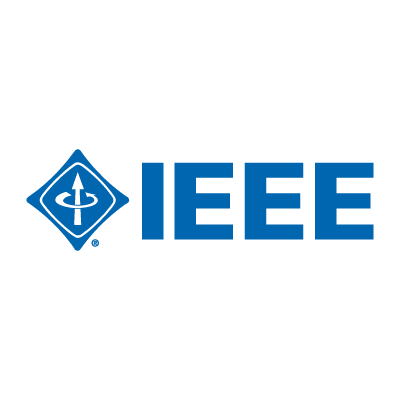
2019 IEEE International Symposium on Phased Array Systems and Technology
October 15 – 18, 2019, Waltham, MA USA

Tutorial: Phased-Arrays, Metamaterials, Stealth, Ultra-Wideband, Cognitive Adaptivity, Radar, MIMO - Basics and Breakthroughs
October 18, 2019 – 8 a.m. – 12 noon
- Instructor:
- Dr. Eli Brookner, Raytheon (ret.)
Abstract: This tutorial covers recent developments in phased arrays updated to 2018. It provides a concise, introductory level survey of the fundamentals without dwelling on extensive mathematical derivations or abstruse theory. Instead a physical understanding is given. Covered in easy terms are: sidelobe cancellation (SLC), Cognitive Adaptive Array Processing (CAAP) which provides full adaptive array processing without suffering its computation complexity.
This course is intended for the engineer or scientist not familiar with phased-array antennas as well as the antenna specialist who wants to learn about other aspects of phased-array antenna systems as well as get the latest developments in array systems, such as: MIMO, metamaterial arrays, Extreme MMIC arrays, stealthing and cloaking, Cognitive Adaptivity. The emphasis will be on the system aspects of phased-arrays.
BASICS: Of Passive Electronic Scanned Arrays (ESAs) and Active Electronic Scanned Arrays (AESAs): Phase Steering, Time Delay Steering, Subarraying, Array Weighting, Monopulse, Duplexing, Array Thinning, Embedded Element, Array Weighting, Array Factor, Triangular vs Square Lattice, Tour of COBRA DANE ESA and PAVE PAWS AESA (both 6 stories high) via color slides. Limited and hemispherical scan phased arrays.
RECENT AESA DEVELOPMENTS: Patriot upgrade to 2016 state-of-the-art AESA; S-band AMDR AESA radar provides 30X sensitivity of SPY-1D(V). LOW COST PACKAGING: AESAs using commercial-off-the-shelf (COTS) hardware and packaging. EXTREME MMIC: Whole 256 element phased array on single chip at 60 GHz. 5G Phased arrays. DIGITAL BEAM FORMING (DBF): Reduces search power and time by almost a factor of two; Makes cognitive radars realizable; enables ultra low antenna sidelobes; MOORE’S LAW: Potential future continuation of Moore’s Law via Spintronics, Memristors, Graphene, Quantum Computing. VERY LOW COST RADARS: for cars, UAVs, watch cell phones. WIDEBAND LOW PROFILE ANTENNA: 20:1 bandwidth. Small antennas now possible: < lambda/50.
METAMATERIALS: low cost 2-D ESAs for satellite internet communications (at 10-15 GHz); for cell towers, for cars and UAV radars; Stealthing by absorption and by cloaking; wideband fractal metamaterials; Army 250-505 MHZ conformal antenna to replace tall whip antennas.
COGNITIVE ADAPTIVE ARRAY PROCESSING (CAAP): Applied to jammers. Tremendous advantages detailed. Space-Time Adaptive Array (STAP) explained and related to the displaced phase center antenna (DPCA).
QUANTUM RADAR: Has potential to defeat stealth targets. LOW COST PRINTED MICROWAVE ELECTRONICS: 1.6 GHz printed diodes achieved. ELECTRICAL AND OPTICAL SIGNALS ON SAME CHIP: Allows data transfer at speed of light. BIODEGRADABLE ARRAYS: Embedded under skin for detecting cancer or low glucose.
New MIMO (MULTIPLE INPUT MULTIPLE OUTPUT) Radar: Explained in simple physical terms instead of with heavy math. Covered are performance, waveforms, signal processing load, ability to handle jamming, performance re conventional radars. Potential applications: OTH, car radars, to combining existing radars to increased performance.
Course Text Book: “Practical Phased Array Antenna Systems”, Dr. Eli Brookner, Editor, Artech House, 1991, Hardcover, 258 pages, List Price $179. Covers array fundamentals: phase and time-delay steering; grating lobes for 1- and 2-dimensional arrays; effects of errors and failures on gain, sidelobes and angle accuracy; array weighting, thinning, blindness, mutual coupling, elements, phase-shifters and feeds; limited field of view (LFOV) arrays; SPY-1; example design. The course book array basics do not change with time. Tutorial and its notes update attendees to 2019 state-of-the-art technology.
Instructor:

Dr. Eli Brookner: BEE: The City College of the City of New York, ’53, MEE and DrSc: Columbia University ’55 and ’62. Dr. Eli Brookner worked at Raytheon Company from 1962 to retirement July 2014. There he was a Principal Engineering Fellow and worked on ASDE-X airport radar, ASTOR Air Surveillance Radar, RADARSAT II, Affordable Ground Based Radar (AGBR), major Space Based Radar programs, NAVSPASUR S-Band up-grade, COBRA DANE, PAVE PAWS, Missile Site Radar (MSR), COBRA JUDY Replacement, THAAD, Brazilian SIVAM, SPY-3, Patriot, BMEWS, UEWR, Surveillance Radar Program (SRP), Path-finder marine radar, Long Range Radar (upgrade for 80 ATC ARSRs across USA), COBRA DANE Upgrade, AMDR, Space Fence, 3DELRR, FAA NexGen ATC radar program. Prior to Raytheon he worked on radar at Columbia University Electronics Re-search Lab. (now RRI), Nicolet and Rome AF Radar Lab.
Received IEEE 2006 Dennis J. Picard Medal for Radar Technology & Application “For Pioneering Contributions to Phased Array Ra-dar System Designs, to Radar Signal Processing Designs, and to Continuing Education Programs for Radar Engineers”; IEEE ’03 Warren White Award; Radio Club of America (RCA) Armstrong Medal 2017; 2017 IEEE AESS Outstanding Organizational Leader-ship Award; Journal of the Franklin Institute Premium Award for best paper of 1966; IEEE Wheeler Prize for Best Applications Paper for 1998. Fellow of IEEE, AIAA and MSS. Member of the National Academies Panel on Sensors and Electron Devices for Review of Army Research Laboratory Sensors and Electron Devices Directorate (SEDD). Published four books: Tracking and Kalman Filtering Made Easy, John Wiley and Sons, Inc., 1998; Practical Phased Array Antenna Systems (1991), Aspects of Modern Radar (1988), and Radar Technology (1977), Artech House. Gives courses on Radar, Phased Arrays and Tracking around the world (26 countries). Over 10,000 attended these courses. Published more than 230 papers, talks and correspondences. Six papers reprinted in Books of Reprints (one in two books). Contributed chapters to three books. Ten patents. Has given 6 webinars on radar (5 for the Microwave Journal [MJ]). Over 700 registered from over 60 countries for the one given May 2, 2018.